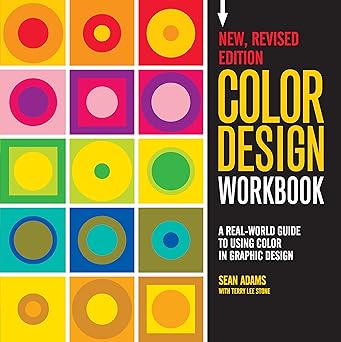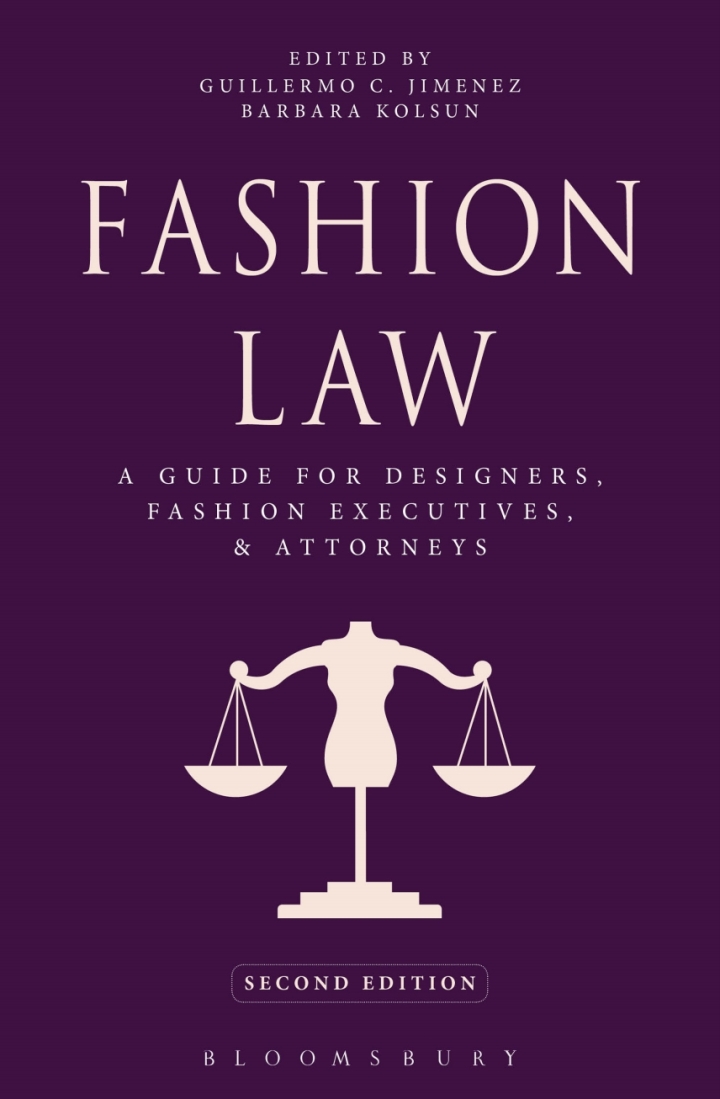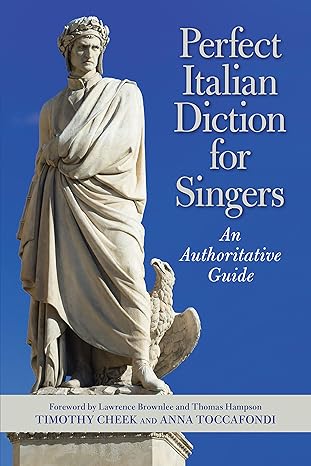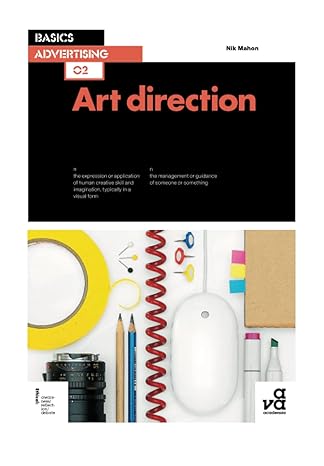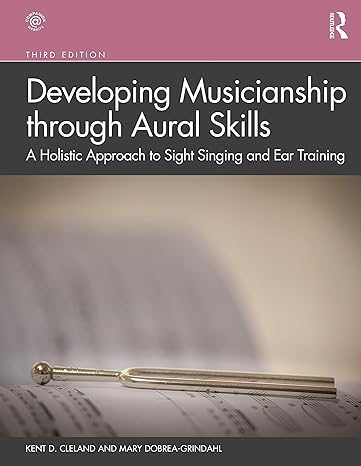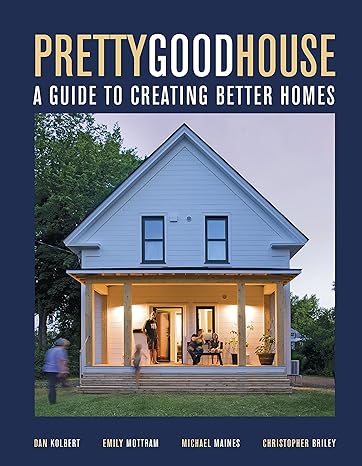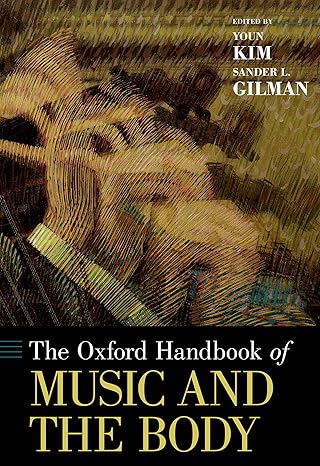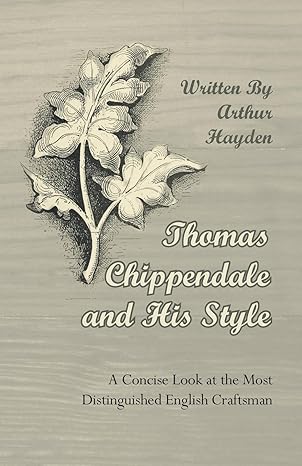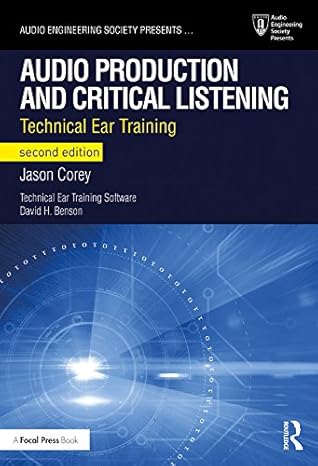The Oxford History of Western Music, College Edition, Second Edition, immerses students in the engaging story of the Western musical tradition. By emphasizing the connections among works, both within each cultural era and across time and place, the text goes beyond a basic retelling of the music's history to build students' ability to listen critically to key works.
A full suite of instructor resources, a free open access student Companion Website, a three volume score anthology, and streaming audio recordings support the text, making The Oxford History of Western Music, College Edition, Second Edition, a complete program for building students' understanding and appreciation of the classical canon.
چکیده فارسی
تاریخ موسیقی غربی آکسفورد، نسخه کالج، ویرایش دوم، دانش آموزان را در داستان جذاب سنت موسیقی غربی غرق می کند. با تأکید بر ارتباطات بین آثار، هم در هر دوره فرهنگی و هم در زمان و مکان، متن فراتر از بازگویی اولیه تاریخ موسیقی است تا توانایی دانش آموزان را برای گوش دادن انتقادی به آثار کلیدی ایجاد کند.
مجموعه کاملی از منابع مدرس، یک وبسایت همراه دانشجو با دسترسی آزاد، یک گلچین سه جلدی، و پخش جریانی ضبطشده صوتی از متن پشتیبانی میکند و تاریخ آکسفورد موسیقی غربی، نسخه کالج، ویرایش دوم، یک برنامه کامل برای ایجاد درک و درک دانش آموزان از قانون کلاسیک.
ادامه ...
بستن ...
Ebook details:
عنوان: The Oxford History of Western Music (9780190600228) Gibbs, Christopher H., Taruskin, Richard
نویسنده: Christopher H. Gibbs, Richard Taruskin
ناشر: Oxford University Press; 2 edition (January 16, 2018)
زبان: English
شابک: 0190600225, 978-0190600228
9780190862473, 0190862475
حجم: 280 Mb
فرمت: Image pdf with ocr
ادامه ...
بستن ...
Contents
Introduction: Reading Music
Part I Ancient and Medieval Music
1 Music from Antiquity to Gregorian Chant: ca. 1200 bce to ca. 1200 ce
Music in the Bible and Ancient Greece
Ancient Greek Theories of Music
Difficulties in Under-standing Early Notation
Music of the Early Christian Church
The Legend of Pope Gregory I
The Development of the Liturgy: The Offices
Proper and Ordinary of the Mass
Writing It Down: Neumes
Guido of Arezzo
Solmization
Church Modes
Psalmody in Practice: The Office and the Mass
The Structure of the Mass Service
Frankish Additions to the Chant Repertory
Hildegard of Bingen
Other New Frankish Musical Forms
Hymns
Tropes
Liturgical Dramas
Marian Antiphons
Notated Music and the Persistence of Oral Traditions
Summary
Study Questions
Key Terms
2 Secular and Cathedral Music in the Middle Ages: ca. 1100 to ca. 1300
Troubadours
Performance and Oral Culture
Music for Elites versus Music for the People
The Trouvères in Northern France
Adam de la Halle and the Formes Fixes
The Geographic Spread of the Troubadour and Trouvère Traditions
Musical Instruments in the Middle Ages
Polyphony: Music for More Than One Voice
Organum and Its Modifications
Organum and Discant
Polyphony in Aquitanian Monastic Centers
Music in Parisian Cathedrals and Universities
Notre Dame Polyphony
Metrical Music
Organum and Conductus with Three and Four Voices
The Motet: Music for an Intellectual and Political Elite
“Franconian” or Mensural Notation
The Late Thirteenth-Century Motet
Summary
Study Questions
Key Terms
3 The Ars Nova: Musical Developments in the Fourteenth Century
Ars Nova Notation
The Roman de Fauvel
Isorhythmic Technique
Guillaume de Machaut: Poet and Musician
Machaut and the Art of Courtly Song
Machaut and the Isorhythmic Motet
Machaut’s Virelais
Machaut’s Messe de Nostre Dame
A New Complexity: Ars Subtilior
Trecento Vernacular Music in Italy
Two “Wild Bird” Madrigals by Jacopo da Bologna
Francesco Landini and Ballata Culture
The Crowning Era of the Ars Nova Motet
Guillaume Du Fay’s Nuper rosarum flores
The Problem with Musical Periods
Summary
Study Questions
Key Terms
Part II The Renaissance
4 Music in Europe: Toward an International Style, 1300-1500
The Influence of English Music
Surviving English Manuscripts
The English Kings and the Hundred Years War
The Influence of John Dunstable on French Music
Guillaume Du Fay and Fauxbourdon Technique
Du Fay and Binchois
The Spread of Music for the Elite
The Cyclic Mass in the Renaissance
The Growth of Four-Part Harmony
The “Caput” Masses
The Man at Arms
The Importance of “Pervading Imitation”
High, Middle, and Low Musical Styles
High Church Music in England
Motetti Missales in Milan
Loyset Compère
Secular Love Songs
Instrumental Music
Summary
Study Questions
Key Terms
5 Church Polyphony in the Late Fifteenth and Sixteenth Centuries: ca. 1475-1600
The Legendary Josquin des Prez
Changes in Music Theory
Josquin’s Career
A Model Masterpiece: Josquin’s Ave Maria
Josquin’s Influence on Other Composers
The “Perfect Art” of the Renaissance
Adrian Willaert and the “Post-Josquin” Generation
The New Instrumental Music
Giovanni Pierluigi da Palestrina
Palestrina Continues the Tradition
Palestrina’s Missa Papae Marcelli and the Council of Trent
Palestrina’s Style
Palestrina’s Textbook Counterpoint
William Byrd in England
Music under Elizabeth I
Byrd’s Music of Religious Defiance
Why Musical Styles Changed
Summary
Study Questions
Key Terms
6 Religious and Secular Music of the Sixteenth Century
The Protestant Reformation
Music in the Lutheran Church
Singing Together: The Lutheran Chorale
The Catholic Response: The Counter-Reformation
Grand Polychoral and “Concerted” Music
Giovanni Gabrieli and the Art of Orchestration
Vernacular Music in the Sixteenth Century
Vernacular Song in Italy
The “Parisian” Chanson
Orlando di Lasso: Cosmopolitan Composer
The Literary Revolution: Music’s Relation to Words
The Return of the Madrigal
Late Italian Madrigalists
Claudio Monteverdi
Carlo Gesualdo
Music for the Eyes
The English Madrigal
The Three Ws: Ward, Wilbye, and Weelkes
Summary
Study Questions
Key Terms
Part III The Baroque
7 Humanism and the Emergence of Opera in Italy: 1590-1640
The Baroque Era
Humanism and the Greek Past
Monody and the Representational Style
The Intermedio: An Allegorical Pageant with Music
The Triumph of Monody
Madrigals and Arias Revisited
The Birth of Opera
Establishing Operatic Conventions: “Heard” and “Unheard” Music
Monteverdi’s Operas: From Court Celebrations to Commercial Entertainments
L’Orfeo
Monteverdi’s Later Career in Venice
Opera and Politics
Monteverdi’s Final Opera: L’incoronazione di Poppea
Summary
Study Questions
Key Terms
8 Music in Italy, Germany, France, and England: 1600-1740
The Rise of Instrumental Music
Master Organists: Frescobaldi and Sweelinck
The Chorale Partita and Chorale Concerto
Germany, the Thirty Years War, and Heinrich Schütz
Schütz Returns to a Germany at War
Italian Oratorio and Cantata
Barbara Strozzi: Performer and Composer
French Opera: Tragédie Lyrique
Drama as Court Ritual: Lully’s Atys
Jean-Philippe Rameau
The Keyboard “Portraits” of François Couperin
English Music: Masques and Consort Music
Purcell’s Dido and Aeneas
Summary
Study Questions
Key Terms
9 Italian Opera Seria and the Concerto Style: 1650-1750
Opera Seria
Reforming Opera
Metastasio and the Role of the Librettist
The Power of the Opera Singers
Corelli and the Development of the Concerto
Antonio Vivaldi
Music Imitating Nature: Vivaldi’s The Four Seasons
Summary
Study Questions
Key Terms
10 Class of 1685: Johann Sebastian Bach and George Frideric Handel
Bach’s and Handel’s Changing Reputations
Bach’s Life and Career
Bach’s Instrumental Music
The Chorale Prelude
The Fugue
The Well-Tempered Clavier
The Baroque Dance Suite: From France to Germany
The Brandenburg Concertos: Stylistic Hybrids
Bach’s Vocal Works
Cantatas
Passions
Handel’s Life and Career
Handel’s Music
Instrumental Music
Operas
Oratorios
Messiah
Handel’s “Borrowing”
Summary
Study Questions
Key Terms
Part IV The Classical Era
11 The Mid-Eighteenth Century: From Bach’s Sons to the Comic Style
Forefather of the New Style: Domenico Scarlatti
Bach’s Sons
The Music of Wilhelm Friedemann Bach
C. P. E. Bach’s Expressive Music
The London Bach: Johann Christian
Intermission Plays
Pergolesi’s La Serva Padrona
The “War of the Buffoons”
Operatic Innovations
The Reform Operas of Gluck
Music and Culture in the Enlightenment
Summary
Study Questions
Key Terms
12 Concert Life Lifts Off, 1725-1800: Franz Joseph Haydn
The Birth of the Symphony
Modern Concert Life Is Born
The Mannheim Orchestra: “An Army of Generals”
Franz Joseph Haydn
Haydn’s Early Life and Career
Haydn’s Years with the Esterházy Family
Haydn’s Symphony No. 45: The “Farewell” Symphony
Haydn’s String Quartets and Concertos
The Symphony Composer in London
Sonata Form
Haydn’s Symphony No. 104, “London”
Haydn’s Final Years
Summary
Study Questions
Key Terms
13 The Composer’s Voice: Mozart (1756-91)
Mozart’s Early Operas
Musical Portraits in Opera
The “Da Ponte” Operas
Mozart’s Two Last Operas
Mozart’s Symphonies
The “Symphonic” Concerto Is Born
The Piano Concerto in G Major, K. 453
Domestic Genres
Sacred Music and the Requiem
Mozart and the Emergence of Romanticism
The “Beautiful” and the “Sublime”
Summary
Study Questions
Key Terms
Part V Romanticism
14 Beethoven (1770-1827)
The Religion of Art
Early Life and Works
Early Life
The Move to Vienna
Personal Disaster: The Loss of Hearing
The Middle Period
The Mighty Eroica Symphony
Beethoven’s Opera Fidelio
The Fifth Symphony and Fate
“More an Expression of Feeling Than Tone Painting”: The Pastoral Symphony
Concert Life in Beethoven’s Vienna
Rising Fame and Decreasing Productivity
Late Beethoven
The Ninth Symphony
Inwardness: The Late String Quartets
Summary
Study Questions
Key Terms
15 Opera in the Age of Rossini, Bellini, Donizetti, and Weber: 1810-50
The Popularity of Gioachino Rossini
Rossinian Conventions: The Overture
Imbroglio: The Comic Finale
The Serious Aria
Vincenzo Bellini and Bel Canto
Gaetano Donizetti
German Romantic Opera: Carl Maria von Weber’s Der Freischütz
Nationalism
Folk Song, Folklore, and Folk Tales
Summary
Study Questions
Key Terms
16 Schubert’s Private Art: 1797-1828
Schubert: A Life in Art
Schubert’s Health Crisis
What Contemporaries Knew of Schubert’s Music
The Elevation of the Lied
Lyric and Ballad: Goethe’s “Heidenröslein” and “Der Erlkönig”
Schubert’s Settings of Goethe
Schubert’s Piano Character Pieces
Schubert’s Later Works
The “Unfinished” Symphony
Following Beethoven
Schubert’s Last Songs
Summary
Study Questions
Key Terms
17 Romantic Spectacles: From Virtuosos to Grand Opera: 1800-1850
The Devil’s Violinist: Niccolò Paganini
Paganini’s Caprices
“The Paganini of the Piano”: Franz Liszt
Transforming Music through Arrangements
The Lisztian Concert
Spectacle on the Stage: French Grand Opera
Daniel-François-Esprit Auber’s La muette de Portici
Giacomo Meyerbeer
Meyebeer’s Contested Reputation
Summary
Study Questions
Key Terms
18 Music and Literature: Berlioz, Mendelssohn, and Schumann, 1830-50
Hector Berlioz
Berlioz’s Fantastic First Symphony
The Orchestration of the Fantastique
Tracing the Idée Fixe through the Fantastique
The Initial Reception of the Symphonie fantastique
The Prodigious Mendelssohn
The Concert Overture
Mendelssohn’s Paulus and Civic Nationalism
Nationalism Takes a Racial Turn
Schumann and Literature
The Influence of Literature on Schumann’s Music
Schumann’s “Year of Song”
Schumann’s Last Years
Genius Restrained: Fanny Mendelssohn Hensel and Clara Wieck Schumann
Summary
Study Questions
Key Terms
19 “Outsiders” in the Romantic Tradition: Chopin, Gottschalk, and Glinka, 1820-60
The Genius of Chopin
Chopin’s Career: From Warsaw to Paris
The Pinnacle of Salon Music
The Chopinesque Miniature
Chopin’s Mazurkas and Ballades
An America Virtuoso: Louis Moreau Gottschalk
Russia: The Newcomer
National Markings and Folk Tunes
Mikhail Glinka
An Education in Italy and Germany
Glinka’s A Life for the Tsar
Summary
Study Questions
Key Terms
20 Musical Politics in the Mid-Nineteenth Century
Franz Brendel and the Dialectic of History
The New German School
Liszt’s Symphonic Poems
Liszt’s Les Préludes
The Meaning of Les Préludes
“The Music of the Future”
Eduard Hanslick and Absolute Music
The Concerto Transformed
Concertos by Mendelssohn, Schumann, Liszt, and Berlioz
Summary
Study Questions
Key Terms
21 Richard Wagner and Giuseppe Verdi: Class of 1813
Art and Revolution: Wagner’s Early Career
A Union of the Arts
From Theory into Practice: The Ring of the Nibelung
Wagnerian Leitmotifs
Wagner’s Theories on Words, Orchestra, and Theater
The Ultimate Experience: Tristan und Isolde
Troubling Parallels between Wagner’s Life and Art
Wagner’s Final Opera: Parsifal
Verdi: Upholding the Italian Tradition
Early Verdi: The “Galley” Years
Stirrings of Revolution: The Struggle for a Unified Italy
Tragicomedy in the Shakespearean Manner
A Trio of Masterpieces
Il trovatore and La traviata
Rigoletto: Opera as Modern Drama
Verdi in Retirement
Verdi’s Last Opera: Falstaff
Summary
Study Questions
Key Terms
22 Music in Eastern Europe and Russia: 1825-95
Bedrˇich Smetana: Czech Composer
Early Life and Work
Travels Abroad
Return to Prague
Smetana’s Má vlast and His Later Operas
Russian Musical Nationalism
A New Russian Music
Modest Musorgsky’s Realism
Boris Godunov and Russian History
The Coronation Scene
Revising Boris Godunov
Pyotr Ilyich Tchaikovsky
Tchaikovsky and Nineteenth-Century Russian Symphonies
Fate in Music: Tchaikovsky’s Fourth Symphony
Tchaikovsky’s Life versus His Art
Summary
Study Questions
Key Terms
23 The Revival of the Symphony: 1875-1900
New Halls and New Orchestras
The Development of the Classical Canon
“New Paths”: Johannes Brahms
Brahms’s Symphonic Attempts
Brahms’s Chamber Music and “Developing Variation”
Brahms’s Choral Fame
Brahms’s First Symphony
The Symphony as Sacrament: Anton Bruckner
The Czech Master: Antonín Dvorák
Dvorák in America
The “Boston School”
Symphonies in France
Summary
Study Questions
Key Terms
24 Opera of the Later Nineteenth Century: 1850-1900
Stereotyping the Other: “Orientalism”
Bizet’s Carmen
Russian Orientalism
Opéra Lyrique
Operetta
Jacques Offenbach and French Operetta
Johann Strauss II: The Waltz King and Viennese Operetta
England’s Gilbert and Sullivan
Verismo
The Classic versus the Popular: The Operas of Giacomo Puccini
Summary
Study Questions
Key Terms
Part VI The Twentieth Century to Today
25 Early Modernism in Vienna: Mahler, Strauss, and Schoenberg (1890-1918)
The Birth of Modernism
Vienna at the Turn of the Century
Maximalism
Gustav Mahler: Conductor and Composer
Mahler’s Lieder
From Symphonic Poem to First Symphony
Moving beyond Program Music
Mahler’s Middle Period
Mahler’s Late Works
Richard Strauss: Radical Modernist
Maximalizing Opera: Strauss’s Salome
Arnold Schoenberg: The Next Generation
A New Synthesis of Wagner and Brahms
Schoenberg’s Expressionism
The “Emancipation of Dissonance”
The Monodrama Erwartung
At the Opposite Extreme: Atonal Miniatures
Schoenberg’s Pierrot lunaire
Summary
Study Questions
Key Terms
26 Modernism in France: 1870-1930
Erik Satie: Escaping the Shadow of Wagner
Claude Debussy: Searching for a New Harmonic Freedom
Early Years
Impressionism and Symbolism
Pelléas et Mélisande
“Essentially French”: Gabriel Fauré and Maurice Ravel
Maurice Ravel
New Possibilities for Women
The Rebirth of Ballet
Stravinsky’s The Firebird and Petrushka
The Rite of Spring
Scandalized Reactions to The Rite of Spring
Summary
Study Questions
Key Terms
27 Nationalism in Music: 1890-1930
Finland’s Jean Sibelius
England: Elgar and Vaughan Williams
The Allure of Spain: Manuel de Falla
Folk and Modernist Synthesis: Béla Bartók
Adopting Folk Traditions to Modern Music
Modernism in Eastern Europe: Karol Szymanowski and George Enescu
The Oldest Modernist: Leoš Janácek
Speech Melodies
Alexander Scriabin: From Expression to Revelation
Scriabin’s Mysterium
Charles Ives: American Modernist
Reactions to Ives’s Music
The Concord Sonata
Nostalgia in Ives’s Music: Three Places in New England
The Nationalists’ Legacy
Summary
Study Questions
Key Terms
28 Neoclassicism and Twelve-Tone Music: 1915-50
The First World War and Its Impact on the Arts
Neoclassicism
Igor Stravinsky’s Neoclassical Path
The Music of Stravinsky’s Octet
Stravinsky on His Octet
Arnold Schoenberg’s Twelve-Tone Revolution
The Road to Twelve-Tone Music
The Rules of Twelve-Tone Music
Alban Berg’s Twelve-Tone Romanticism
Anton Webern’s Structural Rigor
Summary
Study Questions
Key Terms
29 Music between the Wars: 1920-40
Popular Music and Classical Composers: Ragtime, Blues, and Jazz
Jazz’s Impact on French Music
In Search of a “Real” American Music
Aaron Copland in Paris
George Gershwin and Popular Music
Duke Ellington
Surrealism in Music
Satie’s Parade
Further Forays in French Surrealism: Les Six
American Surrealism
Music in Germany between the Wars
Alban Berg’s Wozzeck
Music for Political Action
From Vienna to Hollywood: Operatic Techniques in Film Scores
Summary
Study Questions
Key Terms
30 Music and Totalitarianism in the Soviet Union, Italy, and Germany: 1920-45
Totalitarianism and Music
The Rise of the Soviet Union
Music in the Soviet Union
The Doctrine of Socialist Realism
Dmitry Shostakovich’s Troubled Life and Career
Shostakovich’s Fifth Symphony: Capitulation or Hidden Critique?
Shostakovich’s Later Works
Sergey Prokofiev’s Return to His Homeland
Italian Fascism
Arturo Toscanini and Music Making in the New Italy
Music in Nazi Germany
The Flight to Freedom
Carl Orff and Youth Culture
Shades of Gray: Hartmann, Webern, and Strauss
Summary
Study Questions
Key Terms
31 Music and Politics in America and Its Allies: 1930-50
Ultra-modern Composers
Edgard Varèse
Splitting the Semitone: Microtonal Music
New Sounds, New Instruments, New Tunings
The American Left and Music
Aaron Copland’s “American” Music
Carlos Chávez and Silvestre Revueltas in Mexico
American Patriotic Works
The Great American Symphony
Accessible Listening: Samuel Barber and Sergey Rachmaninoff
Opera in Midcentury
Benjamin Britten
A Modern Antihero: Britten’s Peter Grimes
Britten on “The Composer’s Duty”
Olivier Messiaen: “The Charm of Impossibilities”
Messiaen’s Quartet for the End of Time
Faith, Nature, Color, and Rhythm
Summary
Study Questions
Key Terms
32 Music in the Aftermath of World War II: 1945-70
The Aftermath of World War II
The Revival of Serialism
Toward Total Serialism: Olivier Messiaen’s Mode de valeurs et d’intensités
The Darmstadt School
Conversions to Serialism
American Academic Music
Indeterminacy: John Cage and the “New York School”
Music for Prepared Piano
Silence
“Permission”: Cage’s Influence
Morton Feldman: Preserving the Avant-garde
Electronics: An Old Dream Comes True
Musique Concrète versus Elektronische Musik
The New Technology Spreads
Electronics and Live Music
Music in History: Elliott Carter
“Who Cares If You Listen?”
Summary
Study Questions
Key Terms
33 Change in the Sixties and Seventies: Rock, Minimalism, and the Mixing of Art and Popular Music
The Revolutionary Sixties
The Music of Youth: Rock ’n’ Roll
The “British Invasion”: The Beatles
The Influence of Rock
The Rise of Minimalism
La Monte Young
Terry Riley’s In C
“Classical” Minimalism: Steve Reich
Phase Music
Music for 18 Musicians
Philip Glass
Einstein on the Beach
The Impact of Minimalism
The Spiritual Minimalists
Summary
Study Questions
Key Terms
34 “Many Streams”: Millennium’s End, 1970-Present
Competing Visions for Music
A New Diversity
Postmodernism
Collage and Pastiche: Luciano Berio and George Rochberg
Pastiche
Across Time, Space, and Politics: George Crumb and Frederic Rzewski
The Neo-Romantics
American Neo-Romantics
European Neo-Romantics
The Avant-Garde Continues
The Digital Revolution
Performance Art
The Death of Classical Music and the Revival of Opera
John Adams and Nixon in China
A New Spirituality
Summary
Study Questions
Key Terms
Appendix: Structure and Text of the Mass
Notes
Glossary
Further Reading: A Checklist of Books in English
Index
ادامه ...
بستن ...

